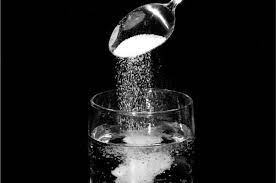Water is a universal solvent because it is needed by all biological lives. Water is a non- ionic polar molecule, which dissolve anything similar to it. As earlier stated, the molecule of water is made up of two atoms-hydrogen and oxygen.
Out of these two, oxygen atom is negatively charged whereas the atom of hydrogen carries a positive charge. As both the charges are weak, it makes the molecule neutral in itself. It is because of the same reason that water is able to dissolve all those substances which are of the similar type. Thus, water dissolves more of the substances rather than the liquid in it.
When a substance dissolves, its molecules separate from one another and mingle with molecules of the solvent. Because water is electrically charged, it dissolves other charged molecules such as salts, but it does not dissolve uncharged molecules such as oil (Arms, 1994).

It should be noted that humans require more of water than any other substance. The food we eat and the air we breathe in contain a lot of chemicals and other toxins, which are only purified by our kidneys with the help of water.
Water as a Source of Energy
Water act as a source of energy in different ways, for example, the evaporation of water is one of the major sources through which the atmosphere gets its energy. Evaporated water on getting to the upper part of the atmosphere condenses and energy is liberated into the atmosphere.
Read Also : Soil Erosion: Meaning, Types and Factors of Soil Erosion
Hydroelectric energy is produced through the force of falling water. The capacity to produce this energy is dependent on both the available flow and the height from which the water falls. Building up behind a dam, water accumulates potential energy.
This is transformed into mechanical energy when the water rushes down the sluice and strikes the rotating blades of a turbine. The turbine’s rotation spins electromagnets, which generate current in stationary coils of wire.
Finally, the current is put through a transformer where the voltage is increased for long distance transmission over power lines.

